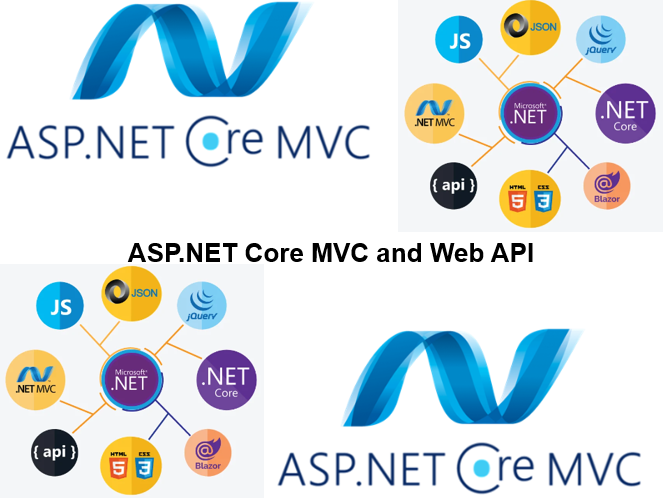-
Learning by doing
-
Trainers with practical experience
-
Classroom training
-
Detailed course material
-
Clear content description
-
Tailormade content possible
-
Training that proceeds
-
Small groups
In the course ASP-NET Core MVC and Web API from SpiralTrain the participants acquire the skills and knowledge to build robust and maintainable web applications using ASP.NET Core. The course covers two key aspects of ASP.NET Core: MVC (Model-View-Controller) for building dynamic, data-driven web applications and Web API for creating powerful and flexible RESTful services.
The course ASP.NET Core MVC and Web API begins with an overview of ASP.NET Core MVC, covering its architecture and differences from traditional ASP.NET.
Participants learn to define actions in controllers to handle HTTP Requests.
Creating dynamic views using the Razor syntax is also discussed.
Then it is treated how you can work with models and data bindings to represent data in an application.
Attention is paid to routing with URL patterns and route parameters to link URLs to controller actions.
Entity Framework Core is also covered with CRUD operations and database migrations.
Standard features of REST such as resources with IDs, URL patterns and standard HTTP methods are discussed.
Routing is then explained and the mapping of routes to controller actions.
Then request and response handling is covered and the implementation of controller actions in more detail.
Part of the course is also data validation and validation errors.
Security is then treated with authentication, JSON Web Tokens (JWT) and SSL.
Finally attention is paid to data access with the Web API with OData and Entity Framework.
The course ASP.NET Core MVC and Web API is intended for Web Developers who want to learn how to build modern web applications with the ASP.NET Core framework.
To participate in this course, good knowledge of the basics of Web Applications with HTML is desirable and basic knowledge of C# is required.
The theory is discussed using presentation slides and demos. The course has a hands-on character where explanations are interchanged with exercises.
After successfully completing the course, attendants will receive a certificate of participation in ASP.NET Core MVC and Web API.

Module 1 : Intro ASP.NET Core MVC |
Module 2 : Controllers and Actions |
Module 3 : Views and Razor |
|
What is MVC Pattern? MVC Architecture Separation of Concerns Using Visual Studio ASP.NET Core Project Service Classes Project Structure |
Controllers in MVC Request Handling Explicit Dependencies Action Injection Model Instantiation IActionResult Task |
Data Presentation Views User Interaction Views cshtml Files View Components Razor Pages Embedded Razor Markup Model Validation |
Module 4 : Models and Data Binding |
Module 5 : Routing and URL Patterns |
Module 6 : Entity Framework Core |
|
Model Binding Data Sources Mapping Requests Type Conversions Form Collection Input Values Value Providers |
Routing in MVC Configuring Routes MapRoute Method RouteTable Class URL Mapping Multiple Routes Route Constraints |
What is EF Core? Database Providers Context Object Creating Connections Generating Models Querying with LINQ Transactions |
Module 7 : Intro Web API |
Module 8 : Routing and Controllers |
Module 9 : Requests and Responses |
|
What is Web API? Comparison with WCF REST versus SOAP Resources Unique ID's URL Patterns HTTP Methods |
Handling HTTP Requests API Controllers Action Methods Routing Requests Routing Templates Routing Configuration Routing Parameters |
HTTP Requests GET, POST, PUT and DELETE HTTP Verbs Model Binding Parameter Binding Creating HTTP Responses Handling Status Codes |
Module 10 : Data Validation |
Module 11 : Security |
Module 12 : Data Access |
|
Model Binding Model Validation Data Annotations Validation Errors Http Errors HttpResponseException Exception Filters |
Authentication Methods OAuth2 Sign-on Authorization Role Based Authorization Prevent CSRF Attacks JSON Web Tokens Working with SSL |
Open Data Protocol CRUD Operations Model Classes OData Endpoints Query Entity Set Creating Entities Updating Entities |
